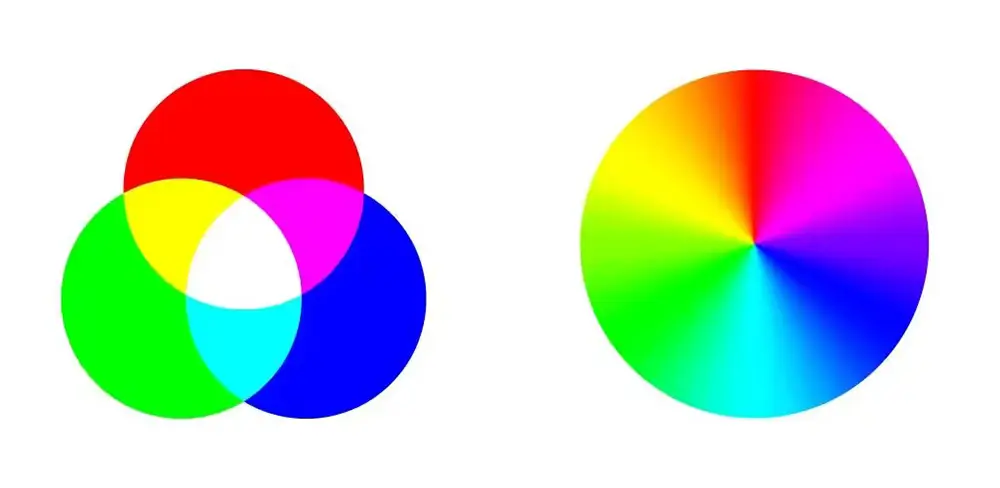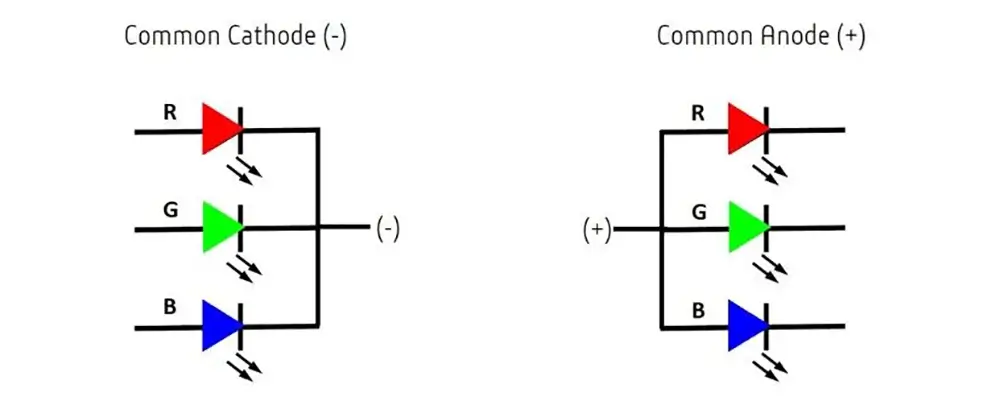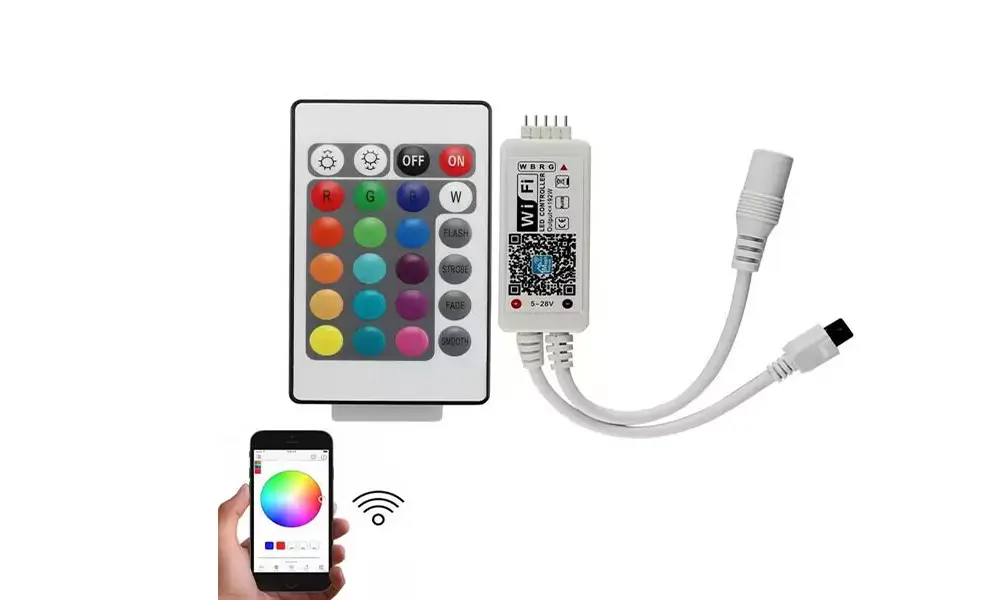
LEDs are a long-lasting, energy-efficient, cool-running light source that continues illuminating our world. The RGB lighting is one of those tricks. With RGB LEDs color mixing millions of colors to output, from LEDs of only three colors (red, green, and blue).
So I’ll also discuss the different types of RGB LED Strip available, how it works, and where the advantages are. Pls kindly read on to learn more about RGB lighting and why it’s so popular.
What is RGB Lighting?
RGB is an acronym for “Red Green Blue,” which refers to the color and how it’s composed. You may ask why red, green, and blue? The answer is that red, green, and blue are primary colors. And you can mix these three in varying amounts to get any other color in the visible spectrum that the human eye can see.
RGB is an additive color model, you need to mix the main colors: red, green, and blue to get other colors. If you combine all three colors at maximum intensity (100%), you get white. If you combine them all at minimum intensity (0%), it will turn black.
How Does RGB Color Work?
RGB color profiles are formed through an additive process. They are used primarily on computer screens and the web. In general, the RGB colors are made through light, which can have any intensity. So, they can make up an extensive range of colors. When you look at various colors on your computer screen, you’ll see they are based on the RGB hues red, green, and blue. RGB primary colors at full intensity are white, while at the lowest power, they’re black.

What is RGB LED Strip?
RGB LED strip work on the same principle. Many RGB LEDs are mounted on a strip, usually with 4 traces, 3 for each color and one for the common anode. These strips usually end with a standard 4-pin connector (technically called a C4P connector) that plugs into the RGB LED controller.
Different Types of RGB LED Strip
RGB LED Strip: a LED strip with triple diodes (red, green, and blue on one diode). To form white light, the three diodes are used simultaneously. With this classic RGB the white light may contain traces of other colors. This white light will not have the same brightness as the white light of a true white LED.
RGB+W LED Strip: A LED strip with triple diodes (red, green, and blue on one diode) and a separate white diode for pure white light. Because of the larger distance between the two diodes of the same color, evenly distributed light is not guaranteed. With this type of RGB, distinguishing the different light beams will be easier to see.
RGBW LED Strip: A LED strip with quadruple diodes (red, green, blue, and white on one diode). Provides excellent evenly distributed lighting in any color.
How does color mixing apply to LEDS and RGB Lighting?
An RGB LED is an LED module that can produce almost any color using these three primary additive colors: Red, Green, and Blue. The simplest version of an RGB LED has a combination of 3 separate light-emitting diodes in one package, housed under a clear protective lens. This LED package will have 4 pins, one for each of the three colored diodes and one common anode (+) or cathode (-).
The 3 primary color LEDs use the principle of additive color mixing we talked about above to make more colors than we can imagine. LEDs are dimmable by nature which allows each red, green, and blue color to produce all the different hues of that color.
Technically, each colored LED can produce 256 shades. It takes a high-quality and premium DMX controller to actually get every shade possible but we will go over that more in the controller’s section. For now, you can see that light manufacturers combine the 3 primary LEDs with their 256 shades (256 x 256 x 256) to come up with the ‘16.7 million different colors’ slogan that so many RGB lights come with.
So how does an RGB LED create different color combinations? It is as simple as adjusting the brightness of each LED. Increase the brightness of red and blue LEDs while lowering green to make purple. Turn down the blue LED and turn up the red and green LEDs to make yellow.

How Can You Control RGB LEDs and RGB LED Strip?
To use RGB lighting, you need an RGB LED controller to work with. They are sometimes called 3-channel controllers because they basically control 3 primary color “channels”. This will make it easy for you to automatically adjust the 3-LEDs to get the light you want. See below for a few of the different types we typically use:

Single-Zone RGB LED Controllers
These controllers are commonly used to control RGB LED Strip lights. These come with a simple receiving unit that goes in between your power and RGB strips with a handheld controller that lets you control from 20-30 meters away.
Wifi / Bluetooth Multi-Zone Smart RGB Controllers
These SMART controllers can be connected to your smart device through the included phone app. Multi-zone support lets each RGB remote (or smart device app) connect to multiple receivers so that you can control multiple zones/rooms in your home. Easily control your office, living room, and bedroom from the same RGB controller.
DMX controller for RGB lighting
The DMX controller sk c gives you unlimited options and can give you 16.7 million different colors. But DMX controllers used to be too large to use in small RGB applications. However, as technology has improved, today’s DMX controllers can be small touch panels, wall controllers, or even smartphone apps.
Advantages of RGB lighting
RGB lighting is a technology used to create millions of color combinations using a single light fixture. You can control light color and brightness with these lighting fixtures. Plus, it allows you to customize the look of your home or office space, adding a unique and vibrant vibe. Plus, you can use it to adjust the color of the lights, according to your mood and theme.
RGB lighting can form all colors you want, ranging from warm white to cool blue. LED strip is one of the most popular RGB lightings. In RGB LED strips we distinguish 3 types:
Conclusion
The RGB lighting is very versatile, and it is the latest technology in the video and photo industry, its three primary colors can be combined into millions of shades. As such, it can be a versatile and aesthetically pleasing light source for any area of the home. Therefore, This type of lighting is especially suitable for kitchens, children’s rooms, and office environments.
We have various RGB lighting options, with RGB LED strips being the most attractive. In fact, we also support custom LED Strip lights, if you are looking for high-quality RGB LED strips, please contact us ASAP!
